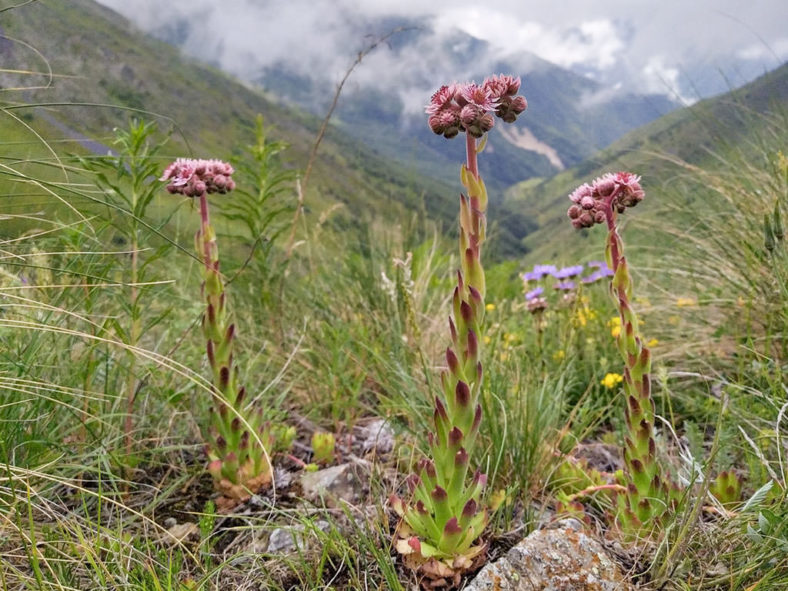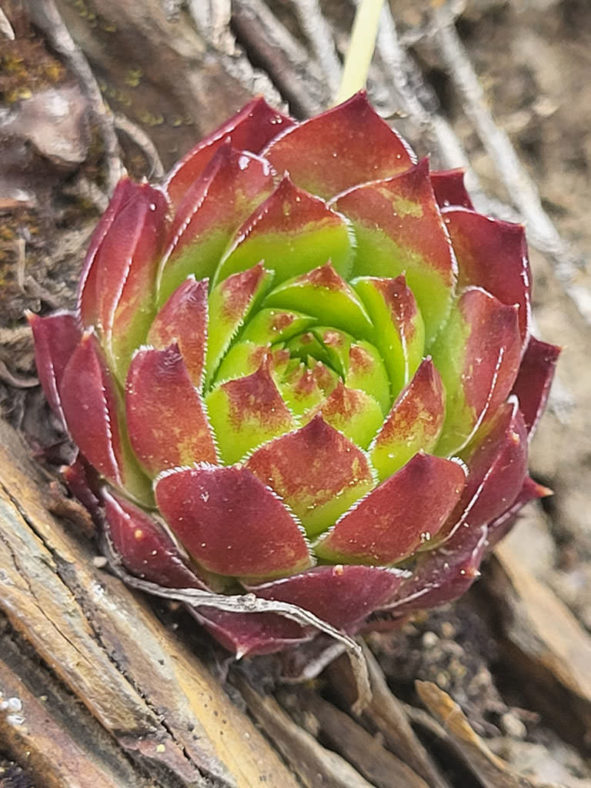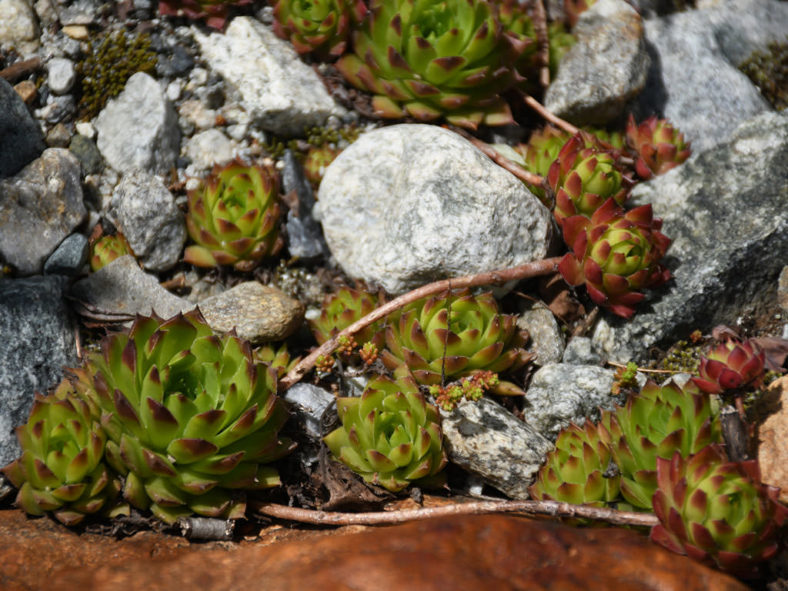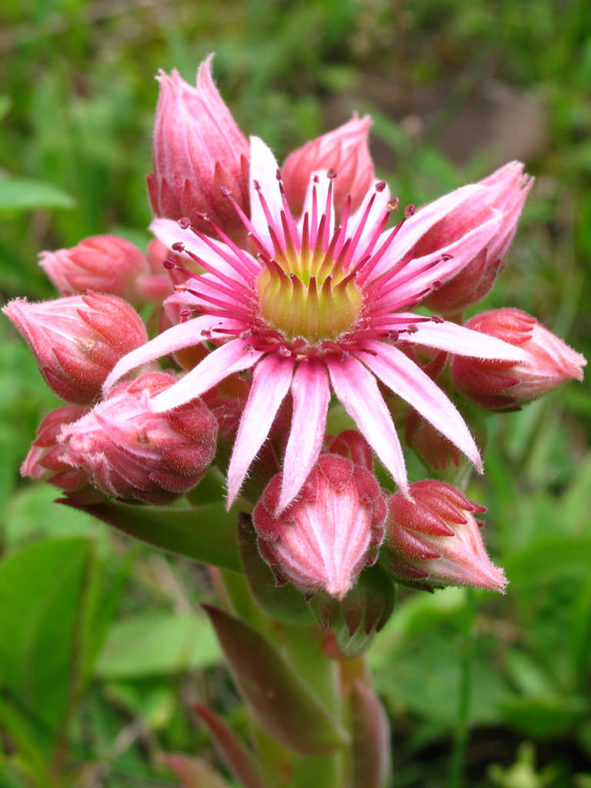Scientific Name
Sempervivum caucasicum Rupr. ex Boiss.
Common Name(s)
Hen and Chicks, Houseleek, Liveforever
Synonym(s)
Sedum vermiculare, Sempervivum flagelliferum, Sempervivum montanum, Sempervivum tectorum subsp. caucasicum, Sempervivum vermiculare
Scientific Classification
Family: Crassulaceae
Subfamily: Sedoideae
Tribe: Sedeae
Subtribe: Sedinae
Genus: Sempervivum
Etymology
The specific epithet "caucasicum (kaw-KAS-ee-kum)" means "belonging to the Caucasus" and refers to the Caucasus, also known as Caucasia, which is the natural habitat of the species.
Origin
The native range of Sempervivum caucasicum is Caucasus. It occurs in the Greater Caucasus in sandy and calcareous soils and schistose rocks in the alpine and subalpine zones at elevations ranging between 3,900 and 8,500 feet (1,300 – 2,600 m).
Description
Sempervivum caucasicum is a low-growing succulent that forms small rosettes of green, spathulate leaves edged with short cilia and ending abruptly in a small dark brown point. The rosettes can grow up to 1.4 inches (3.5 cm) in diameter and produce offsets on long stolons, forming mats with age. The leaves are highly succulent, glabrous to slightly pubescent, measuring up to 0.8 inches (2 cm) long and 0.3 inches (0.8 cm) wide.
The flowers are star-shaped, 12- to 14-merous, and have rose-red petals with purple stripes and reddish anthers. They appear in a terminal cluster on a stalk that can grow up to 8 inches (20 cm) tall in summer. The individual rosettes die after flowering but produce many offsets that continue to grow.

How to Grow and Care for Sempervivum caucasicum
Light: This succulent prefers a spot in full sun but will appreciate some afternoon shade if planted in hot climates. It is unsuitable for indoor growing because it usually does not get as much sunlight as it likes.
Soil: To ensure S. caucasicum thrives, it needs a well-draining soil mix with 25 to 50 % sand, gravel, and perlite or pumice. A commercial soil mix for succulents should be sufficient if planted in a pot to keep the roots dry and happy.
Temperature: S. caucasicum is perfect for cold climates, as it can handle temperatures down to -30 °F (-34.4 °C). It is also heat-tolerant but prefers average summer temperatures between 65 and 75 °F (18 and 24 °C). USDA Plant Hardiness Zones 4a to 9b, -30 to 30 °F (-34.4 to -1.1 °C).
Watering: Water thoroughly during the spring and summer and allow the soil to dry out between watering. Reduce watering in the fall when S. caucasicum enters dormancy. Mature rosettes planted in the ground can overwinter without receiving extra water from you. Plants in containers may need a little water to make it through winter. Never let water sit in the rosette or underneath the pot.
Fertilizing: This succulent grows well without feeding but benefits from a controlled-release fertilizer at the beginning of the growing season. It can also be fertilized once a week with a diluted liquid solution.
Repotting: Plants in containers will benefit from being repotted. Repot as needed, preferably during the spring.
Propagation: The easiest way to propagate S. caucasicum is by dividing the offsets produced each season. The best time to divide the offsets is spring or summer, once they are at least a quarter of the mother rosette's size. Propagation by seeds is also used. Sow the seeds in the fall to have seedlings in size for transplanting in spring.
Learn more at How to Grow and Care for Sempervivum.
Toxicity of Sempervivum caucasicum
Sempervivums are not known to contain any toxic compounds. Therefore, S. caucasicum is considered a safe plant to grow around pets and children.
Links
- Back to genus Sempervivum
- Succupedia: Browse succulents by Scientific Name, Common Name, Genus, Family, USDA Hardiness Zone, Origin, or cacti by Genus
Photo Gallery
Click on a photo to see a larger version.


